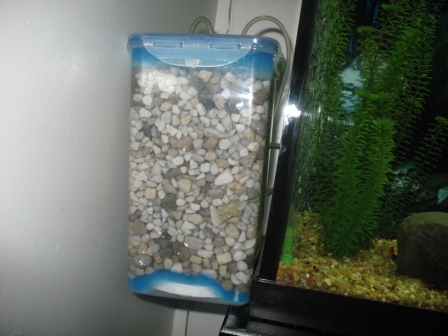You're missing the point of my comment. If a nitrate reactor is designed properly the entire chamber(or nearly so) is anaerobic and so there isn't any need for special media. Anything with surface area will do. The fact that De-nitrate is designed to work anywhere in regular filters as your comment points out, means that you can't be sure if your reactor is creating the correct environment or if it's just that you have enough de-nitrate to do the job. I'm not saying it isn't a good choice for media, just that it makes it hard for you to evaluate the efficiency of your design.
Either way I hope it works.
I made no such comment...Per Seachem, De*Nitrate will only work for denitrification in filters with flow rates less than 50gph. There are very few filters with any real media capacity that have such a low flow rate.
Commercial denitrators for my 60g cost anywhere from $280 to over $600. The efficiency of this DIY filter is the very low cost ! (well, presuming it works).
Although many commercial denitrators use a drip flow rate to starve the chamber of oxygen, why not use an inexpensive media that facilitates the process better? I'd also suggest that the macro pores of the Matrix/De*Nitrate products creates an overall platform area that far exceeds many other medias.
If necessary, I can slow the 3.5gph flow rate to reduce O2, but I shouldn't need to - I'm pumped that this will work.



